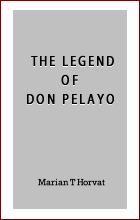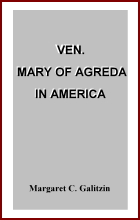Art & Architecture
 |
 |
 |
 |
 |
 |
 |
Mythical Atmosphere of Neuschwanstein Castle

An overview of Neuschwanstein Castle
In German schwan is swan; stein is stone. So, Neuschwanstein is “the new swan in stone.”
An interesting thing about the focus of this castle is that, on one hand, it was not meant to be seen from above. It was meant to be seen from below. Here, the photographer presents it from an upward view. However, evidently the architect who designed this castle made it to display its height. The inconvenience of this kind of photograph is that the castle seems embedded in its surroundings. Instead of looking up at the castle, you look down at it, which is a way of flattening the castle rather that making it rise.
On the other hand, the person who took this photo had an extraordinary talent because he placed the castle amidst the gorgeous icy mountains in such a way that the icy mountains seem to highlight the edifice. So, we look at the tallest tower of the castle and say: “How colossal this tower is! It seems to rival the mountains in an unimaginable height.”
And thus, one can say the angle of the photo remedied what might be objectionable in the placement of the castle. The photographer remedied this splendidly and, in my view, presented the castle quite well.
Another fortunate aspect of this focus that gives an idea of the castle's size is the placement of the lake near the castle so that the castle appears to rise from it. It is only on the second plane that the mountains begin. The first mountain, which is already high, serves to give us an idea of the incredible size of the second. The first mountain is for the second more or less what the type is to the archetype. Something truly magnificent!
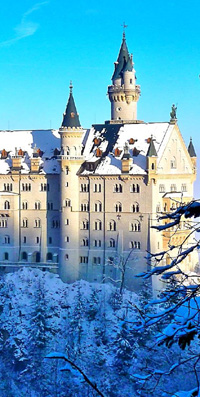
The shorter tower looks at the higher like a type to its archetype
Then, we have two different relationships. Castle and deep valleys surrounded by a lake, and the mountains and nature that encircle it. Two summits, one made by God and the other made by man, and the summit made by man appearing higher than the summit made by God. This is precisely the grace, the charm of the tower, because this tower made by man is something almost unimaginable, which surprises one by its height. The shorter tower is for it what the first mountain is to the second.
So, here we have the work of God and the work of man.
I would find it extremely interesting if this Gospel verse were written under this photo: "Be ye perfect as your heavenly Father is perfect."
For just as God is perfect in His infinite elevation, so it falls to man to imitate Him, not to enter into rivalry with him, by making lofty things. In this ensemble we see a marvel of God’s nature crowned by a marvel of man’s architecture.
Therefore, one could see in this castle an act of worship.
After that, I have nothing left to say but to insist on the castle-mountain relationship.
Noblesse oblige
The daily life of those who live at the foot of the castle – a cooper, a locksmith, a carpenter – is modeled in many ways by the presence of the castle. It exercises the influence of a dream, a good myth, over the life of someone who is open to admiration.
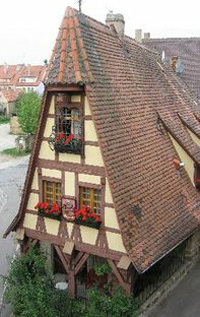
The life of the simple people is much easier than the nobles'
But, then, we could go on to present the larger, more complete picture, where we would find below the cozy German cottage, with its lace curtains and potted geraniums at the window, its thick roof and large wooden door, everything so charming. We can imagine its inhabitants drinking milk and eating honey bread, and inside their home, looking at the castle, seeing all this and thinking, noblesse oblige [nobility is obliged to do hard things].
The lives of those who live on the beautiful mountain beyond are magnificent, but very hard lives when compared to the lives of those who live below. The lives of those who live in the little houses in their intimate warmth without large worries or stresses are much easier than the lives of those who live in the castle with all the responsibilities, obligations, protocols, appearances, political risks and dramas they must face.
This noblesse oblige would be another way of seeing the picture.
Quest for transcendence
Are there two ways of viewing this panorama? Are there two ways of being and living?
In my view, there are two ways of being and living. One is that of the tourist, who visits, takes a photo, then, goes home and puts it in a drawer. The other way is what we are doing here – a meditative, reflective way that seeks the transcendent, which ultimately leads to Heaven. All that I have said here ultimately leads to Heaven.
This, then, is our earthly life where, seeing things on earth, we see in earthly life a reflection of heavenly life, and in this we find a true pleasure. Thus, I can say that I have more pleasure being here with you analyzing this panorama than being an ordinary tourist who travels to Bavaria and only sees what the average tourist sees. Why? Because it is this kind of contemplation what constitutes man's happiness in life.
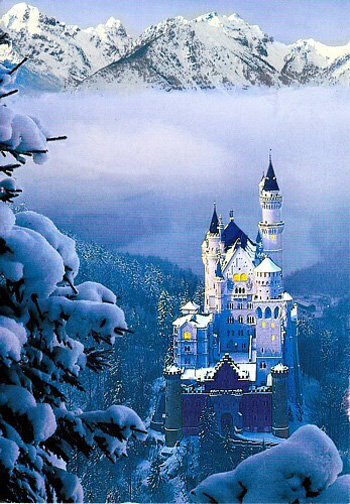
It is this spirit of contemplation that we cultivate when we analyze this scenario.
Someone might ask if the medieval man knew he was doing this. I think not. I believe that making something explicit is the final step of a long process tread by others.
It is true that we are here together making all this explicit, but it took centuries of civilization for this castle to appear and for a man to photograph it in this way. We can make it explicit because we are taking a final step on a long road paved by others, who somewhere in the depths of their souls implicitly had this view of things.
Ours is the most beautiful step in the sense that we are harvesting the fruit of a long work in the making. In this sense it is the most beautiful step, undoubtedly. But it is necessary to look back with respect at all those who paved the way.
We should not say, “Aha, we see, and you did not.” This is not the Catholic spirit. The Catholic spirit is to look back and say: “We all did this together. I am only harvesting the fruit. See how marvelous it is.”
None of us here invented Bavaria. None of us invented anything there. We just made what is there explicit. But we can say to the giant of Catholic tradition: “How beautiful is the panorama that I see, given that I am sitting on your shoulders.”

Posted July 27, 2015
______________________
______________________



